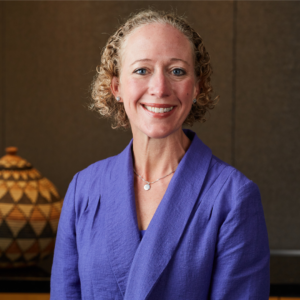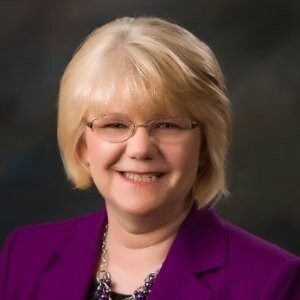MDS 3.0
“Leadership is not magnetic personality—that can just as well be a glib tongue. It is not “making friends and influencing people”—that is flattery. Leadership is lifting a person’s vision to higher sights, the raising of a person’s performance to a higher standard, the building of a personality beyond its normal limitations.”
Peter F. Drucker, Management Consultant
The next generation of the Minimum Data Set (MDS) is about to take its place in the nursing home world. Designed to be more clinically relevant while still achieving the federal payment mandates and quality initiatives, the MDS 3.0 is a big change. How a facility implements this new instrument will determine how accurate the data the surveyors see will be, how representative of the quality of care in the facility the Quality Indicators (QIs) and Quality Measures (QMs) will be, and whether the facility’s Medicare Part A reimbursement will be consistent with the intensity of care it provides.
A centerpiece of the MDS 3.0 is the major shift in assessment philosophy from emphasis on staff observation and record review to incorporating the resident’s own voice as the primary source of information for some of the key items through scripted interviews incorporated into the form. Also, to improve the clinical effectiveness of the instrument, the MDS 3.0 integrates standard assessments and scales that have been validated across healthcare settings and incorporates current standards of clinical practice. The MDS is the major process in a nursing home; the transition to the MDS 3.0 is a big change. Fully and properly implemented, the MDS 3.0 can achieve all of its regulatory mandates and also be the foundation for resident-centered, resident-directed care. The leadership of the director of nursing (DON)can be the difference in ensuring successful implementation that also fully uses the clinical benefits of the assessment.
The target date for nationwide implementation is October 1, 2009. Successful transition requires that planning for the rollout start now. Here are some suggestions for how to get started.
Recognize that as the DON, you have a central leadership role. An effective and dynamic leader develops a vision for what must be accomplished and communicates that vision in a clear and positive manner that leaves no question about the goal—and the worthiness of the goal—that everyone will work toward together.
Resistance to change is inevitable. Present this change as a positive one: for residents because resident-directed care and assessments will meet the clinical standard of practice; for the facility in relation to efficiencies of the new tool and improvements in survey and QI outcomes. Involve everyone with a role in the MDS 3.0 in decision-making about the change. Be a role model for change.
Staff members involved in the process will need formal training initially and on an ongoing basis to ensure compliance with all requirements. Remove obstacles that might prevent them from receiving the training and support they will need.
Be sure to understand the MDS 3.0, how it works, and how it can be used to improve care. That doesn’t mean that you have to know how to fill out every item on the MDS. But it does mean that you must know enough about it to ensure that the team responsible for completion of the form gets it right. It is critical that you have a clear understanding of its role in improving quality of care and quality of life for your residents.
Understand that the MDS is a complex process. Facilitate development of processes within your facility for implementation of the MDS 3.0 and for maximizing the use of it for care planning to improve quality of care and quality of life for residents on a continuing basis. As leader, you can do this in several ways: (1) Experiment with the interviews yourself. Using the scripted interviews from the MDS 3.0, sit down with a resident or two and find out what it’s all about. Use that experience to support the staff in their learning and in their efforts to develop processes to support the new way of doing things. (2) Take this opportunity to provide extensive training to the entire interdisciplinary team on how to collaborate with each other rather than continuing the ineffective practice of each discipline remaining in its own silo, planning care separately, and fragmenting care. For example, as information about the resident is collected using the scripted interviews to stimulate discussion about what is important to the resident and other information sources, members of the interdisciplinary team should take that data into the care conference and put all of it on the table for analysis by the team. From the analysis, problems can be identified and action plans developed. At the end of the process, the group can decide which discipline will be responsible for which portions of the plan. (3) As the interdisciplinary team becomes familiar with the requirements of the MDS 3.0, encourage the team to brainstorm what will be needed in terms of process for them to be able to do their work efficiently and effectively. Flow chart the proposed process step by step and then go back through the process with the team to see where barriers to success might be. Help the team to identify ways to eliminate the barriers or change the process.
Change is never easy. It takes time and vision, patience, and leadership skills. The investment of passion for the residents, commitment to interdisciplinary team members, and clear articulation of vision and expectations from a dedicated leader will help to pave the way for full implementation of the MDS 3.0.
Rena R. Shephard, MHA, RN, RAC-MT, C-NE, is Executive Editor of the Ameri- can Association of Nurse Executives. She can be reached at (858) 592-6799 or for more information, visit
To send your comments to the author and editors, please e-mail shephard0308@iadvanceseniorcare.com.
Sidebar
About AANEX
AANEX is a non-profit professional association representing nurse executives working in the long-term care industry. AANEX is operated by nurses for nurses and is dedicated to providing members with the resources, tools, and support they need in their specialized role of leader and manager in long-term care.
AANEX offers the nurse executive:
The opportunity to discuss common challenges and problem-solve with peers and experts from across the country via the Executive Town Hall and online discussion groups
Quick and easy access to current long-term care news, regulatory updates, manuals, and publications
Weekly e-mail reminders about important dates, deadlines, and current events
Educational programs and CEs encompassing the essential job functions of the long-term care nurse executive
ExecExpress, a weekly newsletter addressing tough issues and frequently asked questions posed by AANEX members
AANEX is the organization chosen by successful leaders in long-term care. To join or to get more information about AANEX, visit https://www.aanex.org or call (877) 457-7208.
I Advance Senior Care is the industry-leading source for practical, in-depth, business-building, and resident care information for owners, executives, administrators, and directors of nursing at assisted living communities, skilled nursing facilities, post-acute facilities, and continuing care retirement communities. The I Advance Senior Care editorial team and industry experts provide market analysis, strategic direction, policy commentary, clinical best-practices, business management, and technology breakthroughs.
I Advance Senior Care is part of the Institute for the Advancement of Senior Care and published by Plain-English Health Care.
Related Articles
Topics: Articles , Facility management , Regulatory Compliance










